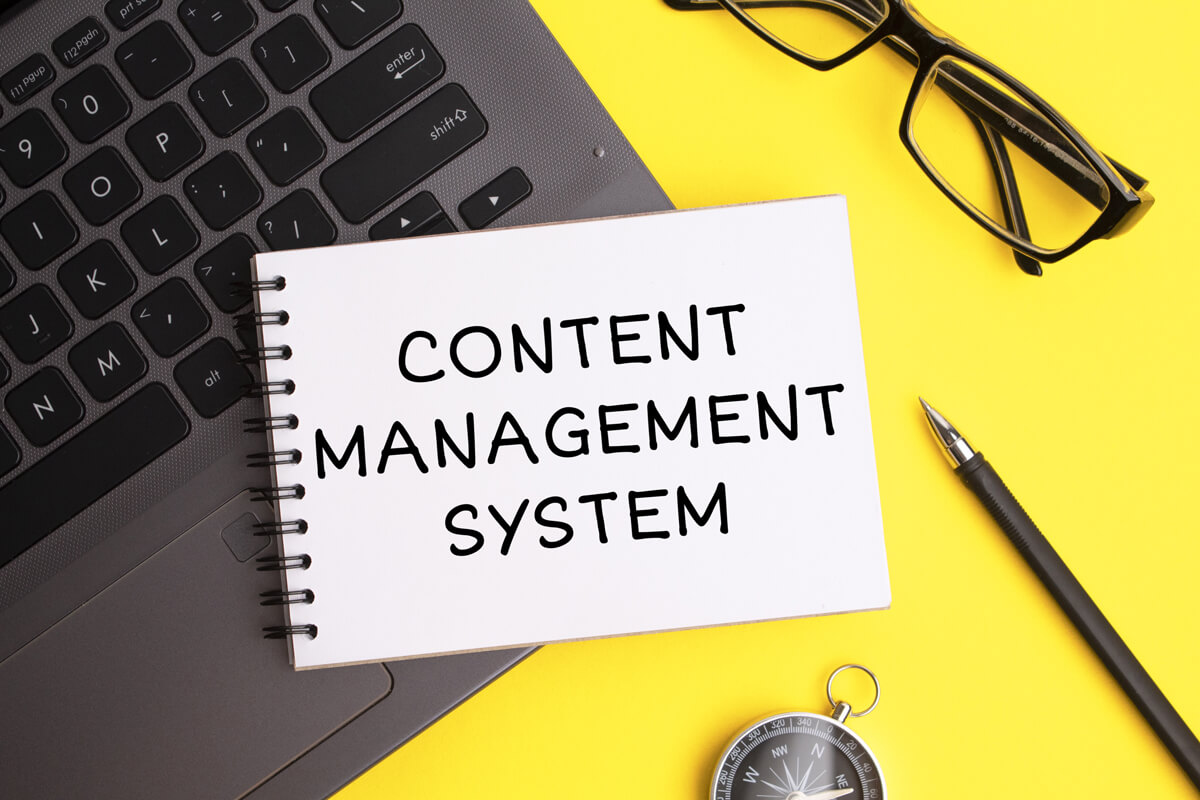If you’re into the content marketing business, you probably already know how important content marketing and management can be. And as necessary as it is to have a content manager, you also need an efficient workflow to manage your content creation process. But how do you know if your workflow is efficient enough? Read on to learn more about content management workflows, their benefits, and the essential features you should have in your own content management system.
What is content workflow management?
Content workflow management is a system that helps you streamline the entire process of creating, editing, and publishing content. A content workflow includes steps such as idea generation, approval, content planning and management, editing and revision, etc. As you can see, it involves many different tasks that must be completed in the right order for content to be published.
Why do you need a workflow?
A well-structured, efficient content workflow has several benefits. It ensures that content is created and published on time, without any mistakes or inconsistencies in the final product. A good workflow also ensures that information is shared with the right people to speed up the process, giving you a clear picture of what’s happening and when. A good workflow can help your team work together more efficiently and deliver better results.
What are the essential features of a content management workflow?
The essential features of a content workflow include:
1- An approval system that gives you clear visibility into the approval process of a document
The approval system should allow you to see who has edited the document and if it needs additional approvals. That’s important because the approval process should be streamlined, so there are no delays or glitches.
2- A task management system that allows you to assign tasks for your employees and see a visual overview of the entire process
The workflow should be clearly laid out so that you know exactly what needs to be done and who is doing it. A sound task management system ensures that you can track each step of the process and assign the work to the right people. This can also involve a checklist so that you can see where each task and employee is in the process.
3- A revision history so that you can track changes in the document and revert to previous versions if needed
Some may think this isn’t important, but it can be very helpful in many situations. If you find yourself suddenly needing to revert to a previous version of an article, you don’t want to find yourself struggling with the revision history. It should be clearly laid out and easily accessible.
4- User permissions so you can control who has access to specific documents and information
This is essential for security reasons and helps you avoid confusion when multiple people are working on a document. You can assign specific permissions to each user in the workflow, which gives you complete control over what each person is allowed to do and when.
5- Metadata management that allows you to add metadata to your documents so that you can find and track them easily
Metadata is a crucial aspect of any workflow because it helps you ensure that you’re not just creating content but also storing and managing it effectively. That’s why your workflow should be able to add metadata easily so that you can find what you need exactly when you need it.
These are just some of the essential features that your workflow should have. Of course, the system you choose will depend on your specific requirements and needs, but if you want to streamline your workflow and ensure that it’s efficient and effective, these features should all be included in the final product.
Now let’s turn our attention to managing the actual processes of your content workflow management.

Strategizing
The first part of the process should begin as soon as you know that your team will be working on new content. It’s essential to have a clear idea about what kind of content you’ll be creating, who it’s for, and why.
This is a crucial step that determines everything else from there on out. If you’re not clear on what you want, the rest of the process will be a struggle.
It’s also important to know the audience you’ll be creating the content for and exactly what they want. That’s why it’s a good idea to do some research before you start writing to ensure you’re hitting the mark with your intended audience.
Planning
Once you have a solid idea about your content, it’s time to start planning the specific details. This is when you can write exactly what type of content you’re creating, who it’s for, and why. It also allows you to consider different ideas that might be used in your content creation.
If you’re writing blog posts, you should start thinking about the specific topics you want to cover. If it’s a long-form piece, you should start looking at different research and ideas that will be used in the actual writing.
Preparing
This is when you start putting the content together. This means creating an outline that will cover all of your points and ensure that they’re organized in a logical, easy-to-understand way.
This should coincide with the strategy and planning stages so you can start writing before your research is even done. If you wait until the last minute, it will be difficult to plan as thoroughly as you want, and it will be almost impossible to write the content easily.
Writing
This is when it comes together, and you can see your plan taking shape. This is the most fun and exciting stage of the process because you’ll be writing your content and seeing it come together in real-time.
It’s essential to start out strong here and ensure you’re on the right track with all your points. If something doesn’t fit, then you should stop and reconsider before it’s too late. But if your plan is going well, this stage will be the process’s easiest and most enjoyable part.
Revising
Once you’ve finished your first draft, it’s time to review and revise your points. Make sure you’ve covered everything you wanted to cover and fix any errors or inconsistencies along the way.
You should also consider getting another set of eyes on your content, whether inviting a colleague or just having somebody else look things over for any obvious mistakes.
Publishing
Now it’s time to make your content available for readers, customers, and the rest of the world. Make sure you have an easy-to-follow plan for publishing your content to get in front of the right people at the right time.
Plus, this is your chance to decide whether or not you want to promote the content and, if so, how you’ll do it. There are many different ways to promote content, and you should at least consider all of your options before committing to a single method.
Analyzing your results
Now you can see if your hard work paid off in the end. This is when you evaluate all of your efforts and see how successful they were from start to finish. There’s no such thing as too much data regarding your content and how well you can promote it.
This is also an excellent time to see what worked and what didn’t work, so that you can use your efforts more efficiently in the future. Knowing how well your content performed is also a good way to judge what you should do in the future and determine whether or not a content creation workflow might be worth your time.
Conclusion
With a content creation workflow in place, you’re ready to start creating better content than ever before. But most importantly, you’ll be able to create more of it faster and more efficiently than you ever thought possible. The Tomorrow Web Design company in Los Angeles is happy to help with your project during this process. Get a Free quote for your project today.
Now that you’ve seen how simple it is to create your own content creation workflow, the next step is to start putting it into practice.
At a certain point, you’ll be able to do all of this without thinking about it. After that, every step of the process will become second nature, and you’ll be able to create great content regularly.
Once you’ve created better content than ever, there’s no stopping you.
Table of Contents
- What is content workflow management?
- Why do you need a workflow?
- What are the essential features of a content management workflow?
- 1- An approval system that gives you clear visibility into the approval process of a document
- 2- A task management system that allows you to assign tasks for your employees and see a visual overview of the entire process
- 3- A revision history so that you can track changes in the document and revert to previous versions if needed
- 4- User permissions so you can control who has access to specific documents and information
- 5- Metadata management that allows you to add metadata to your documents so that you can find and track them easily
- Strategizing
- Planning
- Preparing
- Writing
- Revising
- Publishing
- Analyzing your results
Share on
If you’re into the content marketing business, you probably already know how important content marketing and management can be. And as necessary as it is to have a content manager, you also need an efficient workflow to manage your content creation process. But how do you know if your workflow is efficient enough? Read on to learn more about content management workflows, their benefits, and the essential features you should have in your own content management system.
What is content workflow management?
Content workflow management is a system that helps you streamline the entire process of creating, editing, and publishing content. A content workflow includes steps such as idea generation, approval, content planning and management, editing and revision, etc. As you can see, it involves many different tasks that must be completed in the right order for content to be published.
Why do you need a workflow?
A well-structured, efficient content workflow has several benefits. It ensures that content is created and published on time, without any mistakes or inconsistencies in the final product. A good workflow also ensures that information is shared with the right people to speed up the process, giving you a clear picture of what’s happening and when. A good workflow can help your team work together more efficiently and deliver better results.
What are the essential features of a content management workflow?
The essential features of a content workflow include:
1- An approval system that gives you clear visibility into the approval process of a document
The approval system should allow you to see who has edited the document and if it needs additional approvals. That’s important because the approval process should be streamlined, so there are no delays or glitches.
2- A task management system that allows you to assign tasks for your employees and see a visual overview of the entire process
The workflow should be clearly laid out so that you know exactly what needs to be done and who is doing it. A sound task management system ensures that you can track each step of the process and assign the work to the right people. This can also involve a checklist so that you can see where each task and employee is in the process.
3- A revision history so that you can track changes in the document and revert to previous versions if needed
Some may think this isn’t important, but it can be very helpful in many situations. If you find yourself suddenly needing to revert to a previous version of an article, you don’t want to find yourself struggling with the revision history. It should be clearly laid out and easily accessible.
4- User permissions so you can control who has access to specific documents and information
This is essential for security reasons and helps you avoid confusion when multiple people are working on a document. You can assign specific permissions to each user in the workflow, which gives you complete control over what each person is allowed to do and when.
5- Metadata management that allows you to add metadata to your documents so that you can find and track them easily
Metadata is a crucial aspect of any workflow because it helps you ensure that you’re not just creating content but also storing and managing it effectively. That’s why your workflow should be able to add metadata easily so that you can find what you need exactly when you need it.
These are just some of the essential features that your workflow should have. Of course, the system you choose will depend on your specific requirements and needs, but if you want to streamline your workflow and ensure that it’s efficient and effective, these features should all be included in the final product.
Now let’s turn our attention to managing the actual processes of your content workflow management.

Strategizing
The first part of the process should begin as soon as you know that your team will be working on new content. It’s essential to have a clear idea about what kind of content you’ll be creating, who it’s for, and why.
This is a crucial step that determines everything else from there on out. If you’re not clear on what you want, the rest of the process will be a struggle.
It’s also important to know the audience you’ll be creating the content for and exactly what they want. That’s why it’s a good idea to do some research before you start writing to ensure you’re hitting the mark with your intended audience.
Planning
Once you have a solid idea about your content, it’s time to start planning the specific details. This is when you can write exactly what type of content you’re creating, who it’s for, and why. It also allows you to consider different ideas that might be used in your content creation.
If you’re writing blog posts, you should start thinking about the specific topics you want to cover. If it’s a long-form piece, you should start looking at different research and ideas that will be used in the actual writing.
Preparing
This is when you start putting the content together. This means creating an outline that will cover all of your points and ensure that they’re organized in a logical, easy-to-understand way.
This should coincide with the strategy and planning stages so you can start writing before your research is even done. If you wait until the last minute, it will be difficult to plan as thoroughly as you want, and it will be almost impossible to write the content easily.
Writing
This is when it comes together, and you can see your plan taking shape. This is the most fun and exciting stage of the process because you’ll be writing your content and seeing it come together in real-time.
It’s essential to start out strong here and ensure you’re on the right track with all your points. If something doesn’t fit, then you should stop and reconsider before it’s too late. But if your plan is going well, this stage will be the process’s easiest and most enjoyable part.
Revising
Once you’ve finished your first draft, it’s time to review and revise your points. Make sure you’ve covered everything you wanted to cover and fix any errors or inconsistencies along the way.
You should also consider getting another set of eyes on your content, whether inviting a colleague or just having somebody else look things over for any obvious mistakes.
Publishing
Now it’s time to make your content available for readers, customers, and the rest of the world. Make sure you have an easy-to-follow plan for publishing your content to get in front of the right people at the right time.
Plus, this is your chance to decide whether or not you want to promote the content and, if so, how you’ll do it. There are many different ways to promote content, and you should at least consider all of your options before committing to a single method.
Analyzing your results
Now you can see if your hard work paid off in the end. This is when you evaluate all of your efforts and see how successful they were from start to finish. There’s no such thing as too much data regarding your content and how well you can promote it.
This is also an excellent time to see what worked and what didn’t work, so that you can use your efforts more efficiently in the future. Knowing how well your content performed is also a good way to judge what you should do in the future and determine whether or not a content creation workflow might be worth your time.
Conclusion
With a content creation workflow in place, you’re ready to start creating better content than ever before. But most importantly, you’ll be able to create more of it faster and more efficiently than you ever thought possible. The Tomorrow Web Design company in Los Angeles is happy to help with your project during this process. Get a Free quote for your project today.
Now that you’ve seen how simple it is to create your own content creation workflow, the next step is to start putting it into practice.
At a certain point, you’ll be able to do all of this without thinking about it. After that, every step of the process will become second nature, and you’ll be able to create great content regularly.
Once you’ve created better content than ever, there’s no stopping you.





